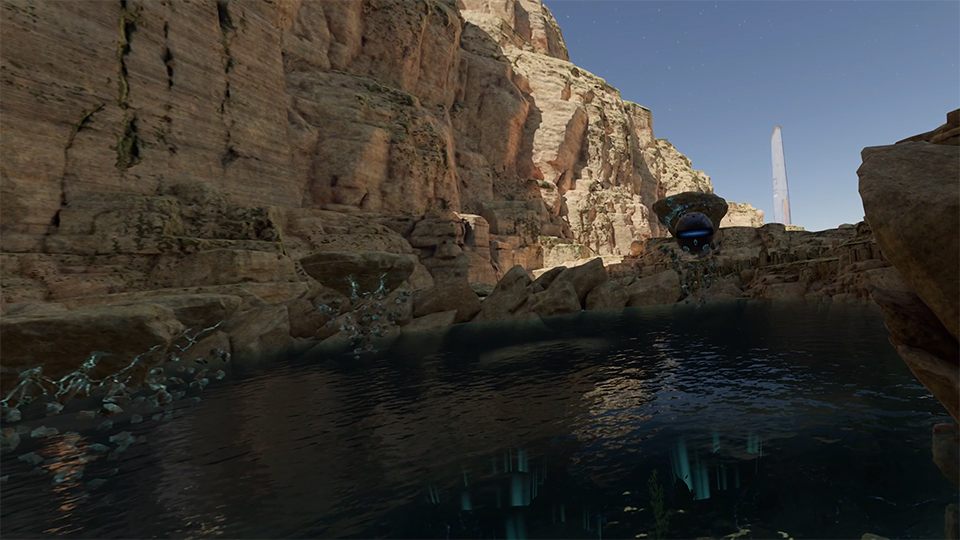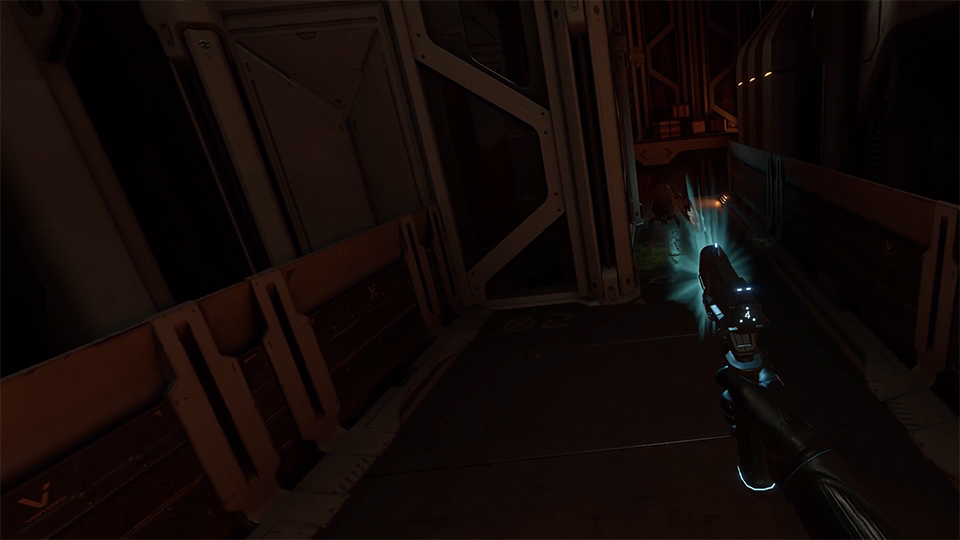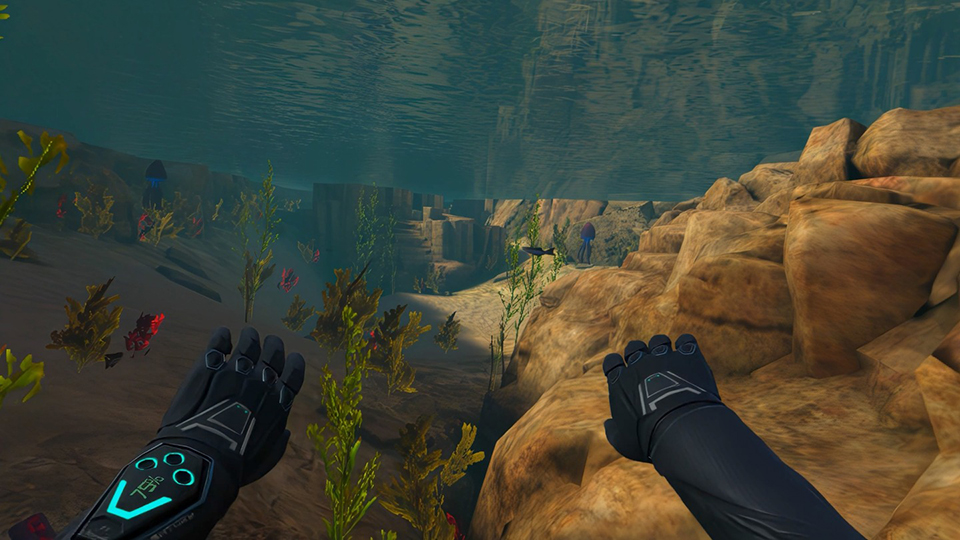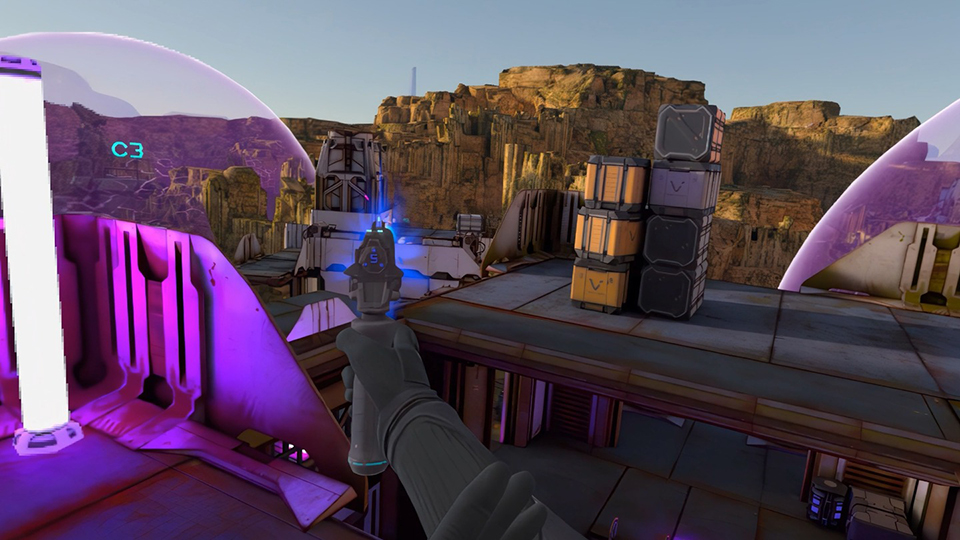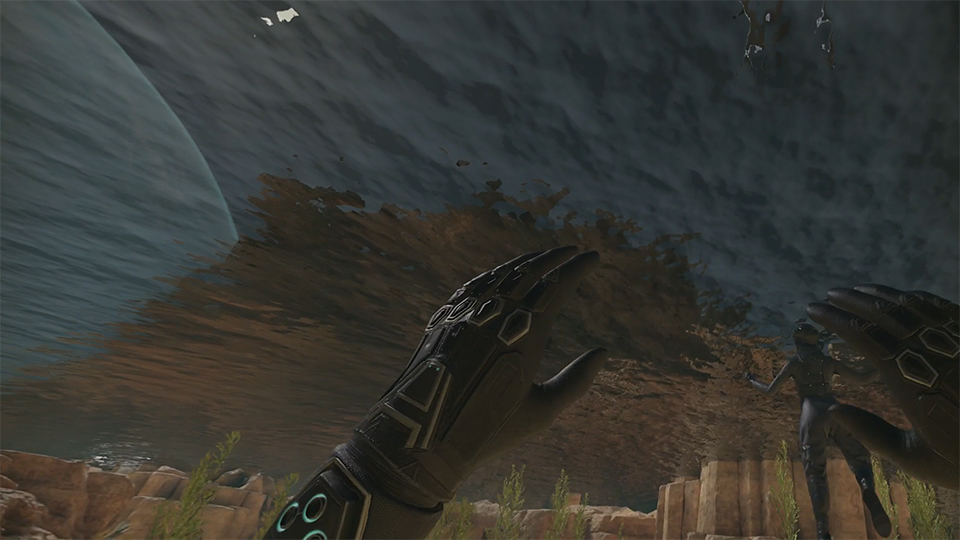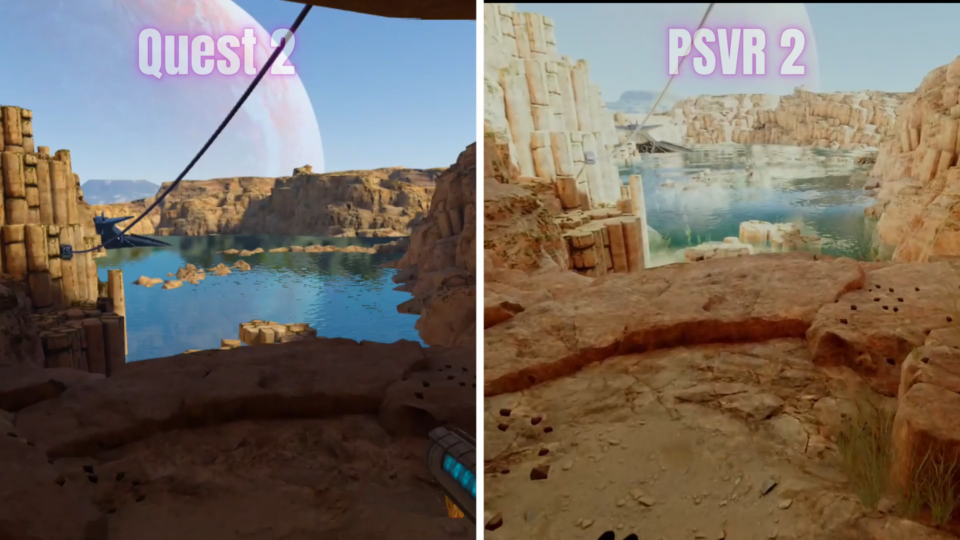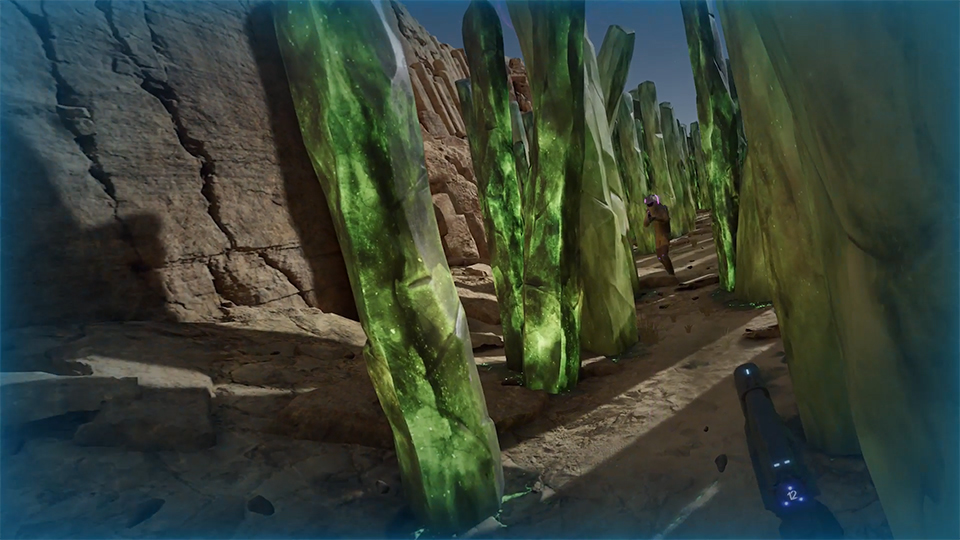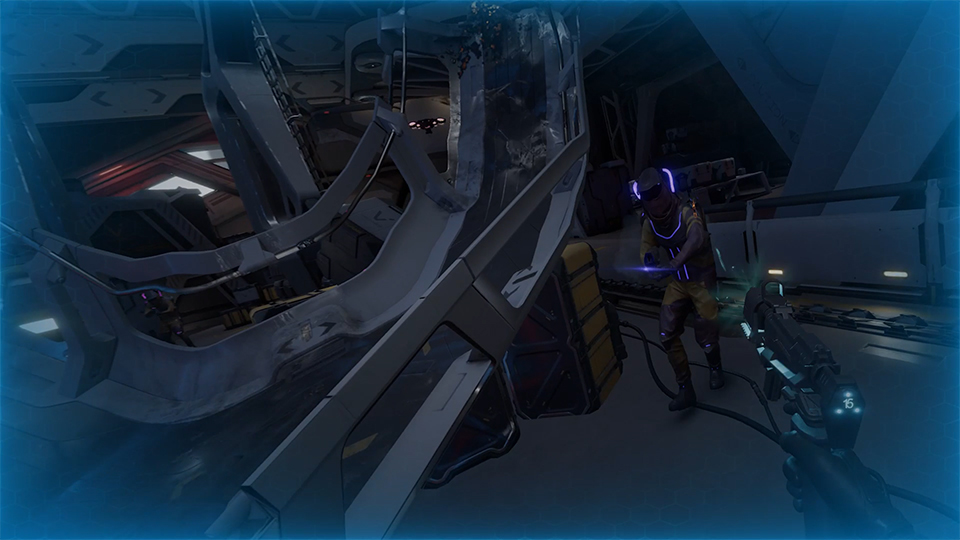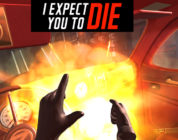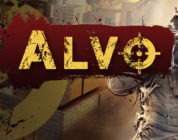Developer / Publisher – Cyborn BV
Price – US $29.99 / CAN 39.99 / EU €29.99 / UK £24.99
Release Date – June 22nd, 2023
Input – 2 x Motion Controllers
Play Area – Seated, Standing
Store Links – Quest, PlayStation
Reviewed on – PSVR 2 / Quest 2
Hubris is a sci fi action adventure game made specifically with VR in mind. Taking more than a few ideas from Half Life Alyx, Hubris injects the Alyx gameplay model with some light crafting and a robust movement system that includes climbing, swimming, and jumping. When Hubris launched 6 months ago on PCVR, it was applauded for its amazing visuals but was lacking in some other key areas. Developer Cyborn has put a lot of effort into making Hubris a better game since then. We’ve put the PSVR 2 and Quest 2 versions through their paces, so read on to see if Hubris is worth your time and money.
In Hubris, you take the role of a recruit in training to become an agent of the mighty and feared Order of Objectivity, also known as the OOO. Together with pilot Lucia, you are sent to the planetoid belt of the Twin planet system to search for the mysterious agent Cyanha on a terraformed planet. To succeed in your mission, you are going to need all the help you can get, as there are other factions eager to unravel the long-forgotten secrets of the OOO. Now this might sound a little vague and generic, and that’s because the story in Hubris is absolutely that. A great work of sci-fi fiction this is not. There is enough story here to keep the gaming moving forward, but little else. So you won’t be playing this for the story – what about the gameplay?
If you’ve watched or read our previous review for the PCVR version of Hubris, then you know Ryan had some real reservations about the game’s balance of its crafting systems and its weak combat system. I can tell you that things have changed for the better with Hubris, but I wouldn’t say this is a vastly different experience than the one that launched 6 months ago. Let me explain. Like I previously mentioned, Hubris definitely takes some cues from Half Life Alyx, and honestly why wouldn’t you. Borrowing many of its gameplay mechanics, such as the over the shoulder inventory storage, gun select menu, simple weapon upgrade system and its overall campaign structure, Hubris is sure to feel similar to anyone who has played the now classic Valve game. However, developer Cyborn seems to have greater ambitions for their game beyond just being a Half Life clone, and that is pretty much immediately stated in the game’s first few moments as players are plunged into the depths of a beautiful underwater scape.
It’s here that players are introduced to the swimming mechanics in Hubris in what would become one of my favorite VR movement mechanics I’ve ever played. Moving with one hand or 2 for more speed and control, or dog paddling to tread water above the surface I found swimming to be truly immersive and almost intoxicating in its implementation, reminding me of the first time I experienced the zero G movement mechanics in Lone Echo. The underwater sections of Hubris may in fact be the best part of the game. Thankfully swimming sections make a regular experience throughout the campaign, getting more ambitious and dangerous as they go along, opening up into larger more expansive underwater environments. The early moments of Hubris also introduce players to the game’s climbing and platforming mechanics. I found jumping to be a little hit or miss for judging distances, but the climbing in Hubris is fantastic, feeling very polished and user friendly. I especially liked that I could launch myself upward or sideways, using my momentum to grab ledges further away without having to hit every hand hold. This reminded me of climbing in The Climb 2 -a good thing in my opinion as it is the gold standard for VR climbing- and made the platforming and climbing sections in Hubris great fun to play with. It also saved my ass more than a few times from some badly timed jumps, as I desperately grabbed for ledges to catch myself. Other movement mechanics like crouching, running and force grabbing of objects are all implemented well here, which certainly made Hubris feel like a polished experience.
Speaking of polish, one area in which Hubris has improved greatly upon its launch state is in the implementation of its crafting system. Crafting here in Hubris uses a few types of crafting machines, each with their own purpose. Some may create health consumables, while some may create organic throwing ropes, but the most common crafting machine is the weapon fabricator, which is used to break down resources into 4 different groups and then repurposes them to create 4 different weapons and eventually level them up. If you’ve watched Ryan’s review of the PCVR version then you know he found the crafting system to be tedious and simply not fun, often requiring players to completely scour areas for each and every type of a certain resource in order to complete a crafting objective, and even locking players in a specific area until they had met the strict resource quota. In addition to this, crafting items required an inordinate amount of resources, which not only weighed the games pacing down, but also made the process of emptying your backpack’s inventory into a crafting machine a real chore. Now I LOVE a good crafting game and don’t mind a little grind, but having played Hubris myself, I can see how the old grind just wouldn’t work here. Thankfully, I am happy to report that the crafting system has been reworked and makes the process of searching far and wide for resources a little more optional. Less resources are now needed to create items and to upgrade weapons. This frees up players to grab the minimum and move forward, but at the same time rewards those more inclined to scavenge with additional healing consumables and the ability to unlock and upgrade weapons earlier on. This is something that players will find very helpful if they play the game on the hardest difficulty setting, which I recommend you do if you wish to find any challenge in the game’s frequent combat sections.
So with that, let’s talk about the combat in Hubris. I think many will compare Hubris to the recently released Red Matter 2. And with a 6 hour completion time, beautiful graphics and a sci-fi based world, it’s not surprising to see why. Now where Red Matter 2 was a puzzle based adventure game first, and sprinkled in combat as a side gameplay mechanic, Hubris does the opposite, asking only the minimum of brain power from its players and instead keeping combat front and center throughout the full campaign.
But is it good?
Well, PSVR 2 and Quest 2 players are now benefitting from the additional 6 months of player feedback and patches since the game dropped on PCVR. Early reviews of Hubris called the combat boring, the AI of NPCs practically non-existent, and the whole process of shooting your way through combat sections an exercise in monotony. Since then work has been done to improve the enemy AI and the system for purchasing and upgrading weapons has been made much easier. So, is the combat fun now? Well…kind of. The issue is that the game has other issues that haven’t really been addressed yet. First, the game has a weapon issue. In addition to the starting harpoon gun that you use underwater and the energy pistol that you get early on in the game, players are able to craft an auto-rifle and a shotgun type blaster that also has a guided grenade as alt-fire. The problem is that these weapons are rarely useful in any of the combat situations. The auto-rifle is underpowered and lacks enough ammunition to offer any benefit to players over the more powerful starting pistol. The shotgun is powerful when up close but many firefights mix in long range attacks. This wouldn’t be so much of an issue if the game’s weapons swapping system wasn’t so slow and cumbersome that attempting to change from the shotgun to a long-range weapon in a firefight wasn’t a death sentence. Additionally, the shotgun’s alt-fire, while being a neat idea, simply fires too slow. And since it requires the player to keep a line of sight and guide the grenade shot, it meant that I was taking huge amounts of damage while guiding the grenade. Ultimately, it was only really useful when I was trying to reach enemies behind cover – something that they rarely do- which leads us to enemy AI.
Second issue: enemy AI in Hubris still is not great. That being said, it is still improved from the launch version. Enemies do move more and take on more dynamic attack patterns. However, I still would regularly come upon enemies that stood idly around, perhaps daydreaming about being in a better game or maybe they simply hadn’t got the memo that their buddies had all been slain literally right next to them. To counteract this issue with the AI somewhat, I played the game on the hardest difficulty. While I wouldn’t say that the AI got smarter, they did get more lethal, which did force me to take cover in firefights, plan attack strategies, and often left me scrounging for healing resources after an encounter. Which, when combined with my desire for more powerful weapons, did make exploration for resources a bit more rewarding. For me, this made the combat matter, instead of simply walking through combat sections as though they were a glorified shooting gallery. But this doesn’t change my primary problem with the combat in that it’s still just not that fun. The game’s energy weapons just don’t have much impact or visceralness, and enemies that take damage simply go limp and then disappear. This resulted in the gunplay in Hubris often feeling like playing laser tag with a bunch of preschoolers.
The exception to this would be the underwater combat sections, especially in the later parts of the game where schools of vicious killer squids had me backtracking in panic as they attacked in numbers. When I went on the offensive with my now-upgraded harpoon gun, dispatched squids died in a glorious explosion of red mist and body parts, offering a tangible quality to the underwater combat that the land based gunplay lacked. I will say though that the dual sense controllers and the head haptics on the PSVR2 did help considerably with this. The HD controller haptics and weighted triggers also gave weapons a sense of weight and power that was lacking in the other versions of the game.
Finally, while the game gives players the option to auto reload or manually push the clip back in, the game lacks the ability to reload a fresh clip when you want. Instead, it forces players to deplete the gun to force a reload, often resulting in entering combat with only a few shots and then having to reload mid-firefight. Ammunition is unlimited, which is another missed opportunity for Hubris to add more strategy to its gunplay. So, not allowing players to reload when they want makes no sense to me. Additionally, I found the way the game handles gun holding very frustrating. You can choose to hold your chosen weapon in either hand, but you can’t let it go. Further to this, two-handing a weapon gives the player more stability as well as a laser sight to better place shots on enemies. This is very useful, but the game doesn’t let players actually grab the gun with their second hand, instead your second hand automatically grips the gun like a magnet when your hands are close together. While not ideal, this is fine in theory. In practice in Hubris, it usually results in often using your non-dominant hand to reload a clip, but then not being able to grab the gun two-handed again unless you pull your hand away and try again. This, when combined with my other gunplay issues, meant I often felt like I was fighting the game to simply play it smoothly.
Okay, enough of my bitching about the failed nuances of the game’s combat. Let’s talk about how Hubris plays as a complete package. As a fairly linear 6-hour campaign, I found that despite its lack of a compelling story, I really enjoyed this sci-fi adventure romp through an alien world. It was around the four hour mark that I felt I’d seen everything there was to see. Areas started to repeat between canyon stages, underwater caves, and similar looking industrial interiors. I’d seen all of the enemy varieties and most of my weapons were upgraded. Unfortunately, the feeling of adventure started to fade away and combat started to feel tedious. It was at this point that I started to question why I was still playing it.
Fortunately, two things kept me going. The first of which is that Hubris, despite some combat issues, does play well. It is a very polished game and it was fun to run around and interact with as I found the movement system very easy to use. The second would be the visuals. Regardless of whether you play this on the PC, PSVR2, or the Quest 2, Hubris is undeniably a beautiful VR game. Yes, I’m as shocked as you are that I included the Quest 2 version on that list. Similarly to Red Matter 2, developer Cyborn has managed some real graphical wizardry to get Hubris looking as good as it does on the Quest’s mobile processor. Now, for a more detailed graphical breakdown of the different versions, be sure to check out our side by side comparison video. For now, I will say that while some concessions have been made for the Quest 2 version, it is definitely one of the best looking Quest 2 titles to date. It’s not quite at Red Matter 2’s level, but it is also a more graphically ambitious title. The Quest 2 version does make use of some pretty aggressive foveated rendering. As it’s really only fully rendering what is directly in front of you, the graphics in your peripheral vision are very jagged and low resolution.
In addition to its use of foveated rendering, the Quest version also sees the use of lower quality textures. It also lacks dynamic lighting, which is most noticeable when looking at weapon fire or when underwater and seeing the lack of light refraction effects that the other versions use to create the sense of actually being underwater. Even with all of these concessions, the Quest still sometimes seems like it can barely keep up with the game. Screen flickering is regularly visible in the corners of the screen as if the Quest couldn’t render the image fast enough when the player looks around. However, even with all of these concessions that I’ve just listed, I still cannot believe that this game is running on the Quest 2, albeit without all of the visual flair of the PC and PSVR2 versions.
Moving on to the PSVR2 version, this is pound for pound the same level of visuals found on the PC version, and that’s very impressive. Is it the best looking PSVR2 game? No, but it’s definitely in that conversation. It’s not as sharp off in the distance as say, Red Matter 2 or Saints and Sinners: Retribution, but it is definitely more visually ambitious than either aforementioned title. If I had to compare it visually to something on the PSVR 2, I would say it reminded me of Kayak VR Mirage. Similar to that title, Hubris noticeably uses reprojection to hit its desired framerate. It’s never as intrusive as say Call the Mountain, which honestly I find unplayable with smooth turning, but rather more like playing Resident Evil 8 Village – noticeable, but still very playable. I usually choose to play these games by turning myself in the real world and that solves most of my immersion issues related to that issue.
The underwater sections of the game are particularly impressive and offer up some really showcase moments to put your friends into. The rest of the game looks impressive, but it does lack a sense of originality, borrowing heavily from games such as Halo: the Solace Project, and Subnautica. As a sci-fi guy, I gobbled this up but it rarely wowed me in its world design. Regardless, being inside the world of Hubris was a treat and definitely hit the right immersion notes with me.
Speaking of immersion, in the PC launch version of Hubris the game had some glaring audio issues. First and foremost this was a complete lack of any soundtrack which left the game feeling empty despite some acceptable use of ambient world sounds. Thankfully this has been completely rectified as Hubris now comes armed with a dynamic soundtrack that also reacts to action beats. I wouldn’t say it’s a brilliant soundtrack, but it does the job and it’s a very welcome addition. Another issue players had with the launch version was the hit or miss voice acting, especially with Lucia, your floating companion, being cringy and never shutting up. Thankfully, the developer has swapped in a new voice actor for Lucia and have also given players the choice, if they so wish, to limit her talking to only essential narrative moments. The rest of the voice acting was fine, and I think players will be happy with the overall acting of the characters. 3D audio is present, though I still found it lacking in combat as enemy NPCs barely make any sounds until they’re actually shooting at you. As such, they do seem to come out of nowhere at times. I do have my suspicions that the game is actually spawning enemies right around corners to beef up the sense of combat threat.
And now for final thoughts and review score.
Hubris is an undeniably beautiful VR game and does bring up the debate of how much visuals matter in a VR game. And while I think that’s a bigger topic best reserved for a future Virtual Boys podcast episode, here in Hubris it definitely takes what is a rather paint-by-numbers action VR title and helps to add in the adventure part to that game’s description. The movement system is very solid and often makes navigating the game’s world a joy. On the other side of things, the combat often falls flat. Never terrible, but not coming off as particularly fun either. As such, this combat-heavy title does begin to lose its luster once you’ve seen all of the environments and ideas that Hubris has to offer. At this point, the game’s great visuals have to carry the game, but can only do so much. Case in point, while six months of further development time has certainly improved key areas of Hubris, it still struggles to be an engaging experience throughout its full campaign.
As such, the VR grid gives the PSVR2 version of Hubris a 7.5, and the Quest 2 version a 7.
Why the score difference? First reason is the lack of dual sense haptics, head haptics, and weighted triggers for the Quest 2 version that are available on the PSVR2 version. I found this directly impacted the gunplay in a game that definitely needs a sense of impact to its combat. Most importantly, the visuals are such a big reason to play Hubris (and to keep playing Hubris) so the downgraded visuals of the Quest 2 version do impact the overall quality of experience. Regardless of how genuinely good the visuals are for the Quest 2, it really does come down to immersion.
Regardless of what headset you own, this is definitely a visual showcase title. Whether it is worth the full asking price comes down to how much that means to you. Outside of the visuals, Hubris is only okay.
Cyborn provided The VR Grid with a press code for this title and, regardless of this review, we thank them for that!

